What is a chemical hazard. Successful chemical control program should include.
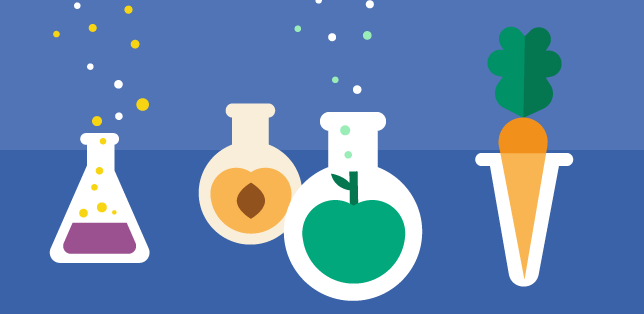
Chemical Hazards Eufic
Special Report Chemical Hazards In Our Food

Who Helps Countries Assess Impact Of Foodborne Illness Food Safety News
A chemical hazard is simply the risks involved with using a chemical.

Chemical hazards in food. The second of the 3 Types. Spills can kill wildlife destroy habitat and contaminate critical resources in the food chain. Handling chemicals is a typical part of the day-to-day routine for many lab workers but the risks and hazards remain the same.
Molecular nitrogen and oxygen. The database represents the data that was available to EFSA at the time of assessment and does not provide any reassurance on whether any of the chemicals are suitable or not for food applications in Europe. Common Chemical Hazards in a Commercial Kitchen When restaurant owners think about the potential hazards their employees face as they go about their daily duties what most often comes to mind are slippery floors that can cause a fall cuts and punctures from the chopping involved in food prep or burns from a hot stove or fryer.
Full safety wear should be provided to any members of the team handling chemicals and provisions to treat any exposure or clean spillages should be. Womens Voices for the Earth. Exposure to chemicals can cause acute or long-term detrimental health effects.
Prudent Practices in the Laboratorythe book that has served for decades as the standard for chemical laboratory safety practicenow features updates and new topics. Although many foods contain inherent microbes proper handling and application of food safety methods reduce the risk of contamination. Chemical hazards in food.
Chemical hazards include water food contact materials cleaning agents pest control substances contaminants environmental agricultural and process eg. Spills can also wreak havoc on the economies of coastal communities by forcing the closure of fisheries driving away tourists or temporarily shutting down navigation routes. The term chemical h ealth hazard refers to the properties of a chemical which can result in acute or chronic health issuesP hysicochemical hazards pose a risk to workers through mishandling or use but they dont occur.
The release of oil and chemicals into our coastal waterways is a major problem. Chemical hazards can occur at any point during harvesting storage preparation and service. Report assessing chemical composition of a limited assortment of nail salon products.
Many organic and inorganic chemicals are corrosive to the skin and to the eyes and can be toxic. There is nothing chemical free nor the air we breathe that is just chemicals. The FDA and the USDA have recognized the wide variety of chemicals used in food processing and have decided what chemicals are acceptable additives in food products and which chemical substances are strictly forbidden.
There are many types of hazardous chemicals including neurotoxins immune agents dermatologic agents carcinogens reproductive toxins. Food chemical hazards can be classified into any one of the following three groups. Chemical contaminants cover a broad range of contaminants including naturally occurring components of certain food ingredients eg glucosinolates toxins produced by.
In the workplace we find two types of chemical hazards. A HACCP Food Safety Plan an essential part of a Food Safety Program is a set of written procedures based on the 7 principles of HACCP that help reduce food safety hazards in a food business. A general definition of a hazard as related to food safety is conditions or contaminants that can cause illness or injury.
Outlines several health hazards that may be present in nail salons. All hazards are assessed and categorized into three groups. Openfoodtox is a compilation of chemical and toxicological information on chemicals assessed by EFSA since its creation and included in already published scientific opinions.
The reactive properties of chemicals vary widely and they play a vital role in the production of many chemical material pharmaceutical and food products we use daily. This revised edition has an expanded chapter on chemical management and delves into new areas such as nanotechnology laboratory security and emergency planning. Sucrose is a glycosyl glycoside formed by glucose and fructose units joined by an acetal oxygen bridge from hemiacetal of glucose to the hemiketal of the fructoseIt has a role as an osmolyte a sweetening agent a human metabolite an algal metabolite a Saccharomyces cerevisiae metabolite an Escherichia coli metabolite and a mouse metabolite.
Skin irritants and asphyxiation. 1 Chemicals that occur naturally. Two male Wistar Rats exposed to vinyl acetate stabilized with 001 hydroquinone concentrations varying between 200 and 2000 ppm in closed chambers with an exposure time of 14 hr or less demonstrated dose dependent elimination kineticsThe authors concluded that the metabolic pathways became saturated when vinyl acetate exposure levels exceeded 650 ppm 2320 mgcu m.
Chemical ingredients found in everyday products are sometimes criticized as being harmful to human health. Microbiological hazards include bacteria yeasts moulds and viruses. Biological hazards include microorganisms such as bacteria viruses yeasts molds and parasites.
Health Hazards Associated with Toxic Exposure in Nail Salons. Food fed to animals may contain various biological chemical or physical contaminants. Food processing also uses refrigerants such as ammonia which can be highly dangerous even in small quantities.
Biological chemical and physical hazards. If you need to create a Food Safety Plan but dont know what it is or where to start CIFS can help. When toxic chemicals used for pest control or for cleaning and sanitizing food contact surfaces and food preparation equipment come into contact with food the.
A c hemical hazard refers to the risks that surround using a chemical. Food processing workers routinely utilize chemical soaps detergents sanitizers and disinfectants to help keep food free of unwanted microorganisms and other contaminants. So in the workplace chemical hazards can include health hazards and physio-chemical hazards.
An industry best practice is to use only chemicals listed in the Reference Listing of Accepted Construction Packaging Materials and Non-Food. A chemical food hazard as defined by the FDA regulation on cGMP Hazard Analysis and Risk Based Preventive Controls for Human Food is any chemical agent that has the potential to cause illness or injury. It is necessary to combat this misinformation of chemical-free.
Identifying Chemical Hazards Presentation. Regarding food safety biological threats play the highest role in causing foodborne illnesses. When chemical reactions are not properly managed they can have harmful or even catastrophic consequences such as.
Some examples of health hazards include. Health hazards and physicochemical hazards. There are four types of hazards that you need to consider.
Acrylamide pesticides biocides and food. Train employees to follow safe handling and application procedures for sanitation maintenance or pesticides chemicals. A chemical hazard is a non-biological substance that has the potential to cause harm to life or healthChemicals are widely used in the home and in many other places.
These may be naturally occurring eg mycotoxins bacteria or introduced during the manufacturing process. But even though all chemicals can be described by inherent hazard even water and oxygen the mere presence of a chemical ingredient does not automatically mean it will cause harm. Some physio-chemical hazards include.
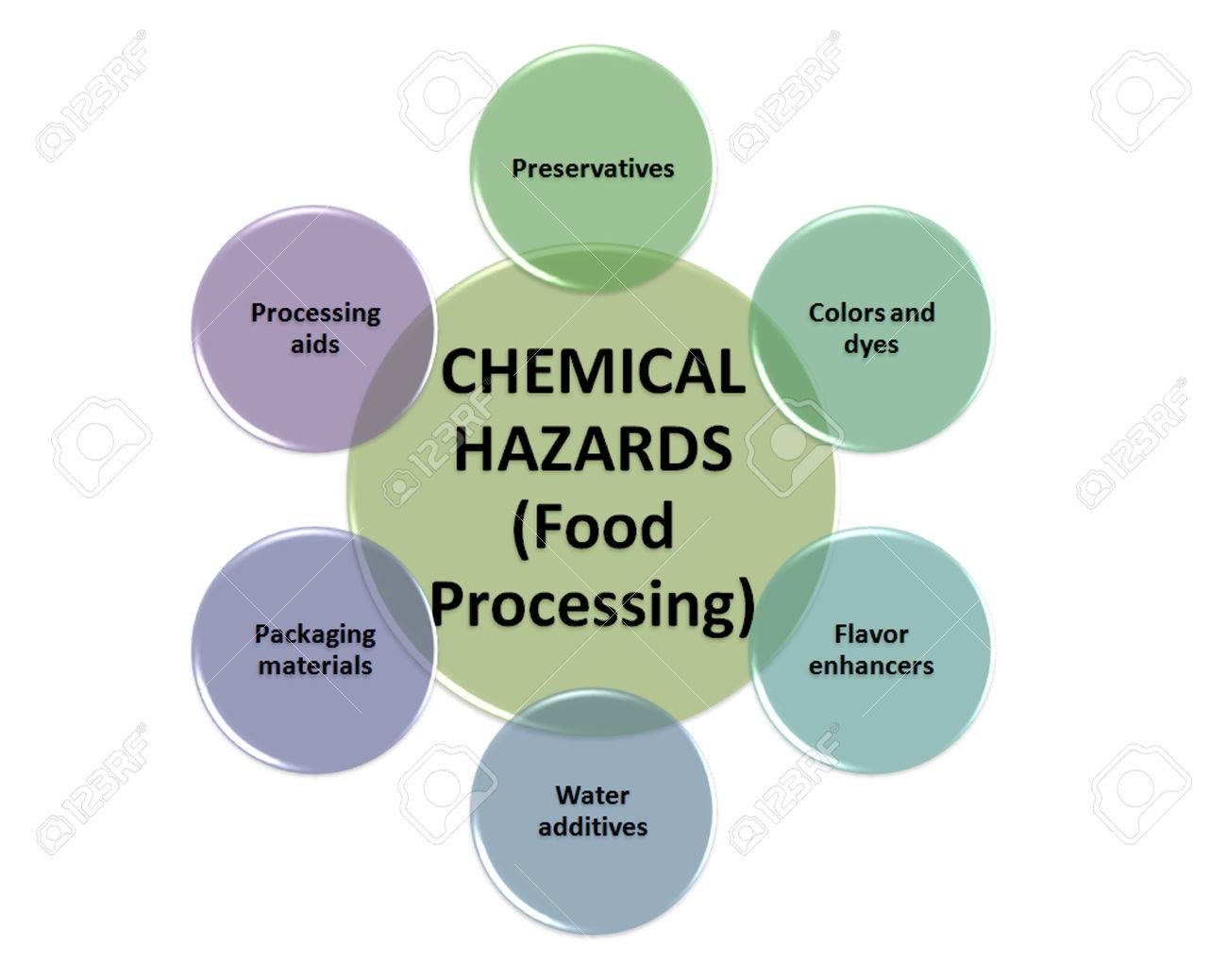
The Sources Of Chemical Hazards In A Food Processing Style Stock Photo Picture And Royalty Free Image Image 30149338
Food Safety And Sanitation Ppt Download
Medcraveonline Com

What Is A Chemical Hazard In Food
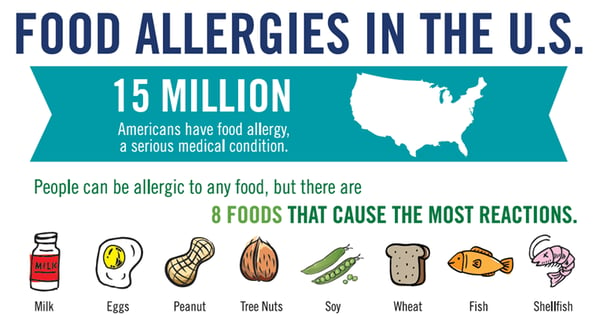
The 4 Primary Food Safety Hazards And Preventing Foodborne Illness

Food Hazards Physical Chemical And Biological Sciencedirect
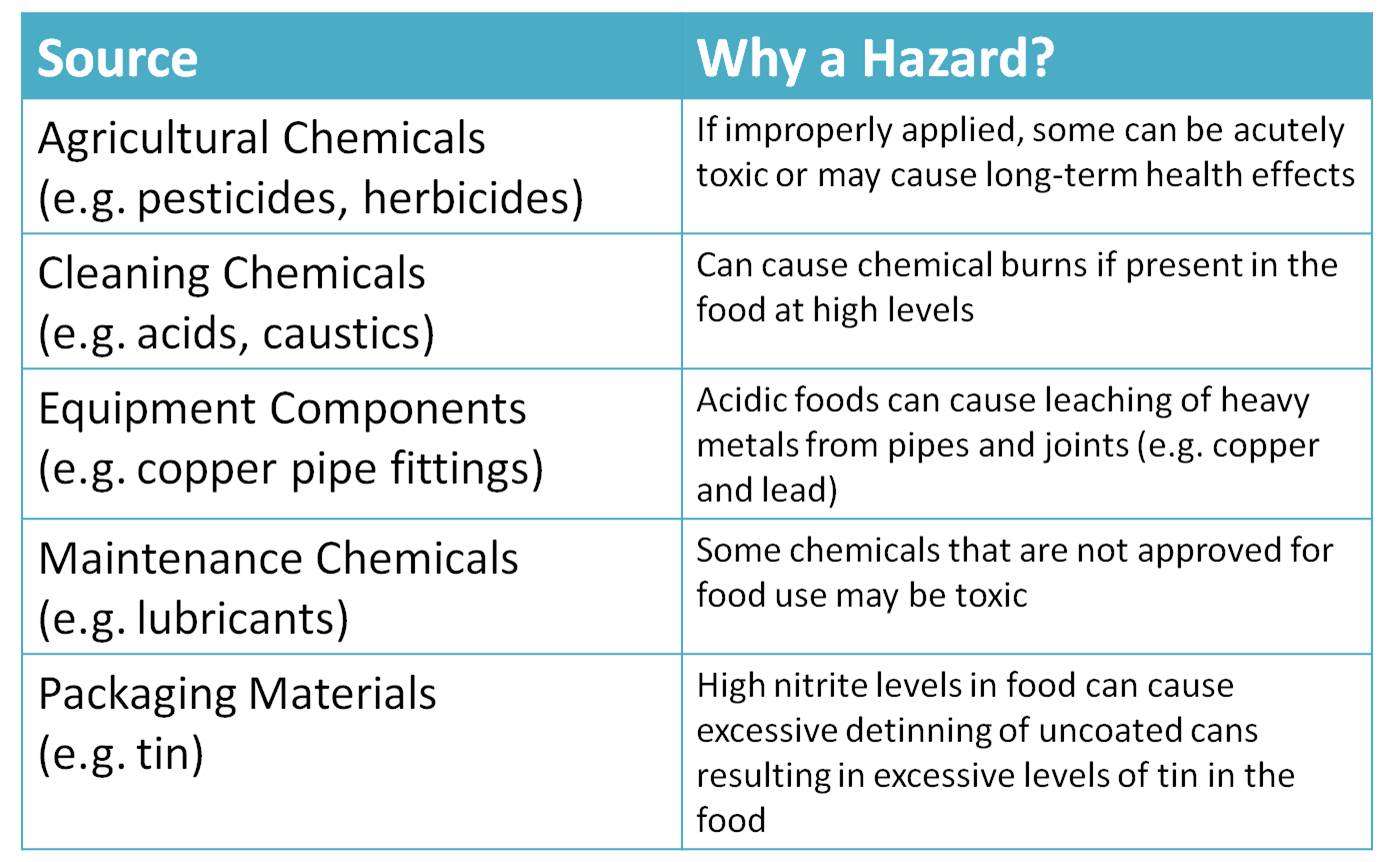
Unintentionally Added Chemicals By Openstax Page 6 6 Jobilize
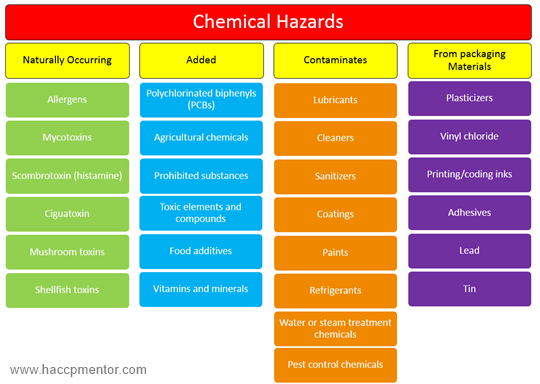
The Ultimate Guide To Food Safety Hazards Haccp Mentor


